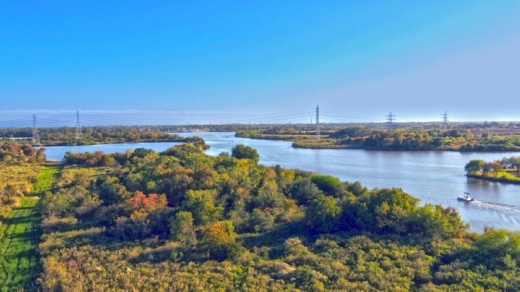Chuck Wolf, an associate with consulting firm Freese and Nichols, spoke before League City City Council during a June 22 workshop. Wolf reviewed what the firm discovered during its 18-month study of the Clear Creek and Dickinson Bayou watersheds.
“This is the easy part, even though it’s taken us 18 months to get here,” City Manager John Baumgartner said.
In its study, Freese and Nichols used modeling to determine in a 100-year storm event, there would be about $500 million worth of damages in the Clear Creek Watershed. In the Dickinson Bayou Watershed, the damages would total over $800 million, Wolf said.
The Dickinson Bayou Watershed has fewer structures as the watershed is less developed than the Clear Creek Watershed, but the structures mostly are together in a “bowl” that is prone to deep flooding, leading to more damages, Wolf said.
For solutions, Freese and Nichols proposed doing detention and conveyance improvements in the Clear Creek Watershed along with building an underground tunnel starting at either FM 2351 or I-45. These solutions would reduce flooding around the creek anywhere from 1 inch to 5 feet, especially in the Friendswood area, Wolf said.
In the Dickinson Bayou Watershed, Freese and Nichols officials concluded detention and channel improvements would reduce up to 3 feet of flooding in the bowl. However, over 1,800 structures would remain at risk of flooding during even a 10-year event, Wolf said.
“We can improve it, but we can’t fix it,” Wolf said of the bowl. “Topographically, it’s too low.”
Additionally, a large bypass channel to Galveston Bay would reduce flooding even more.
Mayor Pat Hallisey asked if there is a way to build tunnels to move water from Clear Lake into the bay. The lake filling up is how flooding problems begin upstream in League City, Friendswood and beyond, Hallisey said.
“Getting that water to the bay seems to be the most important part of our scenario,” he said.
Wolf said pumps would be more effective than tunnels to move water out of the lake. Tunnels need a difference in altitude to gain the pressure necessary to make water flow, but such short tunnels under the lake would likely not work well, Wolf said.
Wolf said some aspects of the study need to be studied further to refine the cost and impacts of proposed solutions. Additionally, officials need to assess how the coastal barrier proposed to be built between Galveston Island and Bolivar Peninsula would affect projects, he said.
Additionally, cities will need state and federal support to afford projects. Freese and Nichols and League City leaders have already met with some potential funding partners, such as Galveston County, Harris County Flood Control District and the Army Corps of Engineers.
Wolf said Freese and Nichols is committed to advocate on the region’s behalf for state and federal support to make projects feasible.





